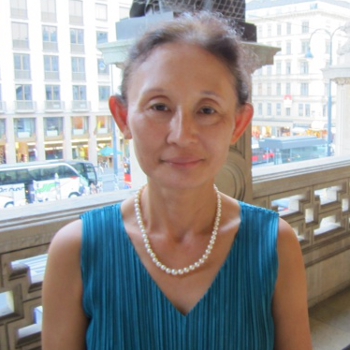Leave it to Munich’s Bavarian State Opera to offer an innovative and engaging, if not at times confusing, staging of Orlando Paladino. Haydn’s dramma eroicomico was first presented in 1782 and was popular in his lifetime, but is now seldom performed. The new production presented during this summer’s Munich Opera Festival was a rare opportunity to savor the prolific composer’s genius in creating a music drama full of florid arias, uplifting preludes, clever transitions and dramatic ensembles. The musical side of the opera was in good hands, with Münchener Kammerorchester led by energetic and inspiring conductor Ivor Bolton. He doubled as one of the two harpsichord players, and when music became complicated with multiple singers involved in ensemble singing, there was an excellent prompter visible at the back of the orchestra pit to direct the flow of music.
The story of the opera is complicated enough. Queen Angelica is pursued by two men, Orlando and Rodomonte, while she is in mutual love with Medoro. Some comic relief is provided by Orlando’s squire Pasquale and a shepherdess Eurilla. Sorceress Alcina is recruited to help the humans sort out their affairs. The young director Axel Ranisch, a film maker by training, transported the setting to a modern movie theater. As the prelude began, a screen showed a film trailer introducing Mr and Mrs Herz and their daughter Alcina entering the theater. The Herzes are the director’s additions, played by actors. Mr Herz (Heiko Pinkowski) was involved throughout as a silent but omnipresent player. It is not clear whether the presence of the actors did much to enhance the proceedings other than to add some comedy.
The black and white movie shown in the theater was titled “Medoro und Angelica”. Other than the two lovers, all the other characters were given dual roles. Eurilla was a cleaning lady; Rodomonte marched in dressed in sharp suits; Orlando was a vagrant. They were transformed into a character of the opera at times, but would go back and forth as well. Angelica and Medoro stood apart in their radiant white medieval costumes. The movie theater gradually transformed from a mundane arena to a surreal space of violence, intrigue and fantasy, as the screen in the back was enlarged. Soon the boundary between modern day and the world of knights became blurred, and the characters began to appear both on stage and on film. Fantasy and reality were now one and the same.
In the second and third acts the screen showed beautiful film of a forest and lake. As the characters sang on stage, some appeared in the film to show a developing attraction among some male characters. The last act took place as the characters watched another film “Director’s Cut: Medoro und Angelica” and sang their arias as the story unfolded on screen. The opera ended as some were united with unexpected partners, almost like Così fan tutte.
The singing was on a very high level. The youthful cast were game for the physical challenges of the production, and seemed to relish the opportunity to act out some fantasies. Adela Zaharia as Angelica had a radiant and melting voice to essay the three arias which presage some of Mozart’s style. Tara Erraught impressed with her rich and clear coloratura singing, while Elena Sancho Pereg as Eurilla bridged the two styles with charm and agility. Edwin Crossley-Mercer (Rodomonte) and Dovlet Nurgeldiyev (Medoro) both sang their brief parts well, the former with strength and bravado, the latter with style and poise.
The two tenors singing Orlando (Mathias Vidal) and Pasquale (David Portillo) deployed their lyrical and flexible voices to delight the audience with their arias and in ensemble. Vidal expressed Orlando’s hope, frustration, rage and resignation with strong technique and vocal colors. Portillo brought down the house with his aria “Ecco spiano. Ecco il mio trillo” towards the end of Act 2; the aria requires the singer to demonstrate mezza voce, trills, syncopation, arpeggio, staccato, and castrati-like falsetto. Dressed in tuxedo with a music stand in front of a closed curtain, Portillo interacted with the musicians in the pit while singing the challenging aria and appeared to be enjoying himself.
This aria was symbolic of both the overall musical excellence of the performance and the clever juxtaposition of fantasy and reality in a production that made clever use of video technology to stimulate our imagination.




